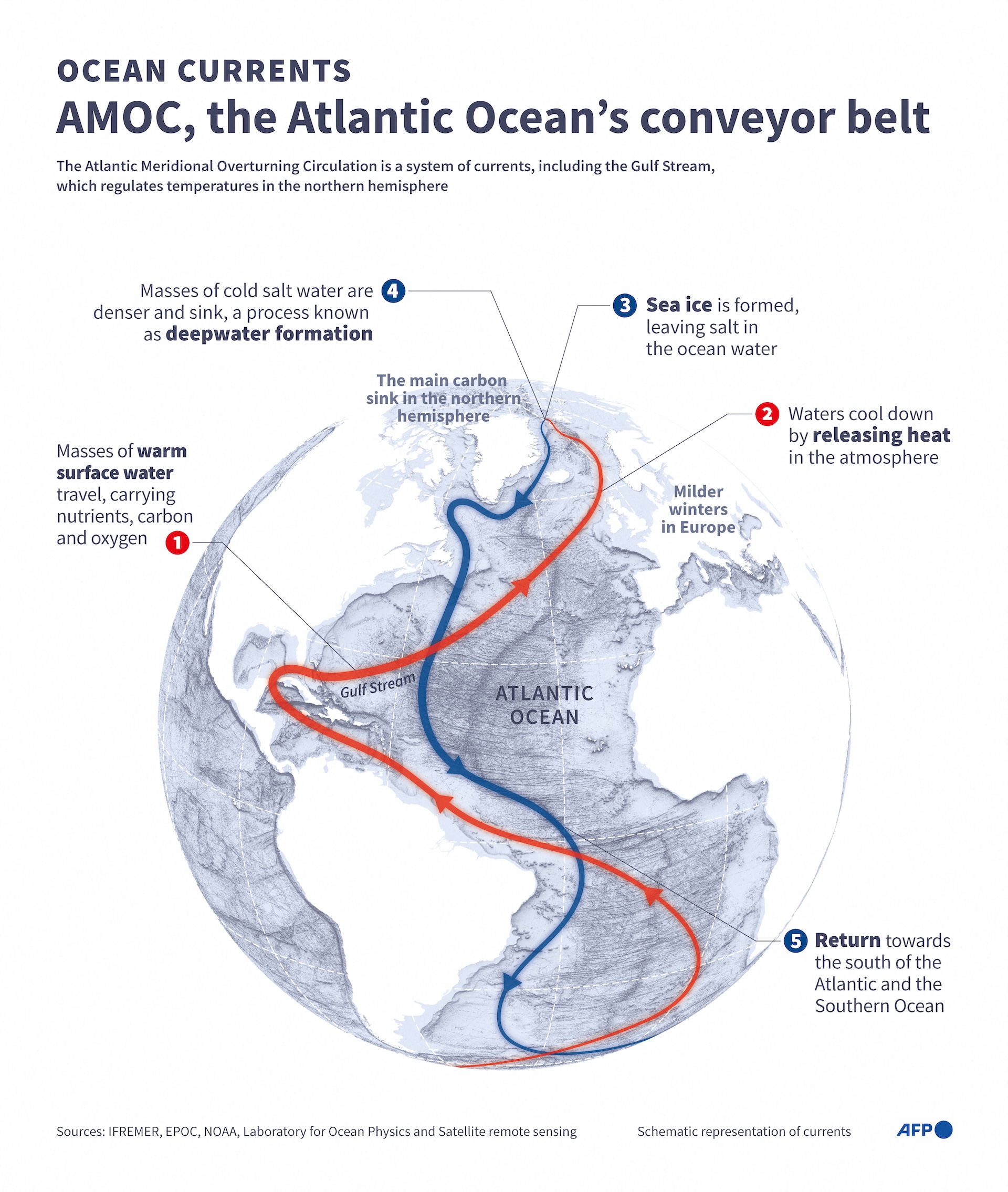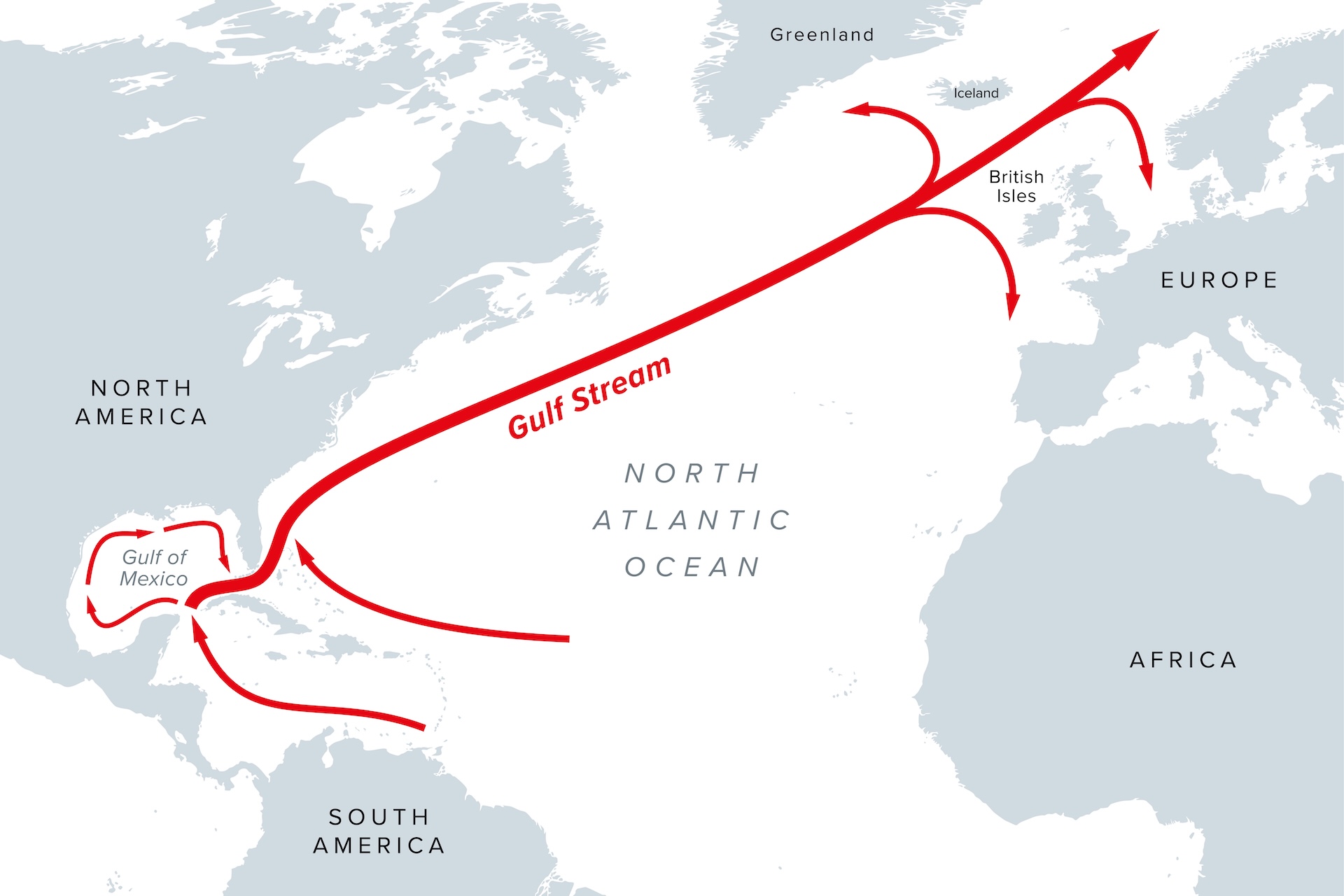Generally speaking, the further away you are from the equator, the lower the average temperature. This is the main reason why many of the hottest deserts are concentrated near the center of the earth, while the North and South poles are some of the coldest places on Earth.
But that logic doesn’t apply to parts of Western Europe. For example, the average high temperature in January in London is 47 degrees Fahrenheit (8.3 degrees Celsius), while in Calgary, Alberta, 4,400 miles (7,100 kilometers) west of London, the average high temperature in January is in the low 30s (less than 1 degree Celsius). Both cities are located at approximately the same latitude. London is at latitude 51.5 degrees and Calgary is at latitude 51 degrees, approximately equal distances from the equator.
you may like
Overall, the average temperature in January in the contiguous United States in 2024 was about 32 Fahrenheit (0 C), while average temperatures felt warmer in many countries in Western Europe. In January 2024, the average temperature in Germany was 35 degrees Celsius (1.5 degrees Celsius), the average temperature in the United Kingdom was almost 39 degrees Celsius (3.8 degrees Celsius), and the average temperature in Spain was 47 degrees Celsius (8.4 degrees Celsius).
So why do some cities in Western Europe have milder winters than some cities in North America, despite being at the same latitude?
Ben Mort, head of open ocean physics at Britain’s National Oceanography Centre, said the main reason was that the Atlantic current system was bringing heat from the tropics towards Europe.
“Imagine you have a wood stove in your house. The cold air is drawn towards the heat. The air rises and circulates,” he told Live Science. “That’s what’s happening in most of the world’s oceans as well.”

This system, called the Atlantic Meridional Overturning Circulation (AMOC), is a web of ocean currents that circulate in the Atlantic Ocean. The AMOC works like a giant conveyor belt, moving 600 million cubic feet (17 million cubic meters) of water and 1.2 petawatts of heat every second, roughly the amount of heat emitted by 1 million power plants operating at the same time.
When large amounts of warm water flood the Northern Hemisphere, the atmosphere also heats up. The prevailing winds, known as westerly winds, then blow from west to east, carrying the warm ocean air in the atmosphere inland like a “heater with a fan,” David Thornalley, a professor of ocean and climate science at University College London, told Live Science in an email. He said westerly winds are particularly strong in the winter and help create a “warm and pleasant winter climate in southwestern England,” at least when compared to the winter climate in places at similar latitudes in North America, such as Calgary and Winnipeg.
ocean, gulf stream, jet stream
The continent of Europe is relatively small and surrounded by water, so it is warm. “Just having an ocean next to it makes a huge difference, because water can store so much heat. In the summer it accumulates and stores heat, and in the winter it’s released into the atmosphere. … This is why places next to the ocean tend to have milder winters than in the middle of a continent,” Thornalley said.
you may like
This could also explain why summers tend to be cooler in some parts of Europe. The ocean is warmer than the air in the winter, he said, but the ocean is cooler in the summer. During the summer, cold water cools the surrounding atmosphere and westerly winds blow inland.
Unfortunately, for cities like New York and Boston in the northeastern United States, being adjacent to the ocean doesn’t necessarily mean warmer winters. A 2011 study published in the journal Nature says the main reason for this is that the Gulf Stream, part of the AMOC that brings warm water to the U.S. East Coast, forms atmospheric waves that draw in cold air from the Arctic region and can deliver frigid air to the Northeast, accounting for 30% to 50% of the temperature difference between the oceans.

Another band of winds that has a big impact on North America’s climate is the jet stream. Like westerly winds, the jet stream flows from west to east, but the jet stream is active in the upper layers of the atmosphere and as it flows downstream from the Rocky Mountains, it “tends” to tilt south, flooding North America with “cold air from polar latitudes,” Sybren Drifhout, professor of ocean physics and climate physics at the University of Southampton in the UK, told Live Science in an email.
The jet stream is generally stronger in the winter because the temperature difference across the jet stream is greater during the winter. Therefore, “bringing Canadian air to the United States” could result in greater temperature drops and, as a result, more extreme weather.
But the warm weather in many parts of Europe may not last forever, especially as extreme weather events become more common with climate change. Peter Ditlefsen, a physicist and professor at the Niels Bohr Institute at the University of Copenhagen, co-authored a paper in 2023 warning that the AMOC, which is important in controlling Europe’s and global climate, could collapse due to anthropogenic climate change between now and 2095, much sooner than previously predicted.
The climate in certain parts of Europe will be similar to Alaska and northern Canada, Ditlefsen told LiveScience. “Studies suggest that agriculture in Ireland and the UK will decline by 50%,” he says. “Of course we hope this doesn’t happen.”
Equator Quiz: Can you name the 13 countries located on the center line of the Earth?
Source link

